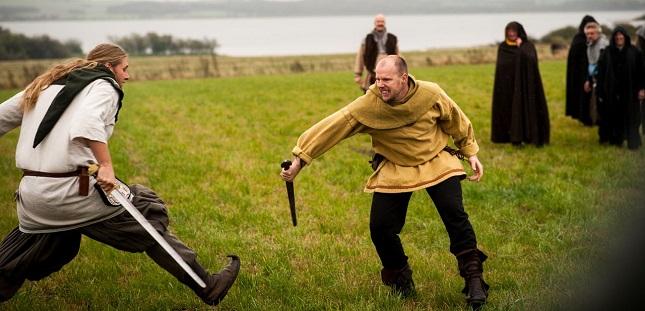Viking combat techniques

It is difficult to know exactly how the Vikings fought, when they did not leave any written records behind to describe this. If we examine the contemporary European written sources, which describe their plundering, these rarely provide any information about the forms of combat they used. However, we can find out more about Viking battle techniques by looking at the weapons that they left behind.
A battle started with the deployment of longbows. The arrows shot from these could deplete enemy ranks, before swords, spears and axes were brought into action. Such Viking longbows have been found at Hedeby. Measuring 193 cm in length, these must have had a range of a couple of hundred metres. When the Viking warriors came closer to their enemy, spears were thrown. Upon making contact with the enemy, they used lances, axes and swords as weapons, whilst protecting themselves with shields.
We also have some knowledge about the tactics that were deployed in the major attacks carried out by Viking fleets. This is because the chronicle writers often give an estimate of how many ships and men were involved in the individual attacks.
Advanced ship technology
The Vikings were very effective at deploying their advanced ship technology. The longships, with their narrow and deep keels, were perfect tools for carrying out surprise attacks and sailing on long European rivers.
The written records include descriptions of Viking fleets of hundreds of ships, indicating that there must have been a high level of organisation behind these expeditions. From the early Viking Age we also know the names of the chieftains who led many of the attacks. In the later Viking period it was often kings who had this responsibility. An enormous amount of logistical work must have been involved to get the many thousands of warriors to function as a unified force. The Viking military leaders are likely to have had a thorough knowledge of the enemy’s weaknesses and of where they would meet with the least resistance.
With their fast ships, the Vikings were very mobile and were able to strike the enemy when they least expected it. It was also necessary to take large cargo ships with them, which could carry extra equipment and food. The campaigns against England and the Frankish Empire, for instance, must have been based upon a high level of organisation and solid leadership.
